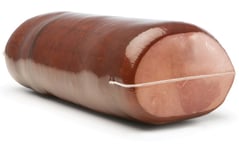 One of the biggest challenges protein processors face is extending product shelf life and ensuring its safety. With a typical protein shelf life of anywhere between 20 and 90 days, it is crucial for processors to identify new ways to extend the shelf life of meat and poultry products.
One of the biggest challenges protein processors face is extending product shelf life and ensuring its safety. With a typical protein shelf life of anywhere between 20 and 90 days, it is crucial for processors to identify new ways to extend the shelf life of meat and poultry products.
Advancements in food packaging solutions and additive ingredients are revolutionizing the way processors think about and approach protein preservation. Here are three innovative packaging techniques to combat shelf life issues.
- Modified-atmosphere packaging: Oxygen is one of fresh protein’s biggest enemies. Using packaging that effectively controls air and moisture transmission can significantly improve shelf life and product safety by discouraging bacteria growth and packaging discoloration.
- Post-pasteurization shrink bag packaging: Product pasteurization is all about safety first. Post-pasteurization involves applying thermal or pressure treatment to packaging to eliminate unsafe organisms. Post-pasteurization shrink bags are ideal for smoked and processed deli meats, and result in a high-barrier, high-clarity final product.
- Bulk packaging: Bulk meat packaging is the process of placing proteins on over-wrapped trays inside of secondary mother bags and only bringing out the product as needed. This method ensures longer shelf and display life in retailers.
Packaging technology isn’t the only way for food processors to address shelf-life concerns. An increasing number of processors are beginning to incorporate functional ingredients and additives into their operations to improve product freshness.
For example, VAN HEES branded BOMBAL® products include a wide range of additives intended to help extend the shelf life of meat and poultry products by controlling bacterial growth and slowing down the oxidative processes. VAN HEES branded ZARTIN® products, which include additives that are specially developed to increase water-binding capacity, can be used as a phosphate alternative or in conjunction with phosphates to increase yields and improve the quality of meat and poultry products.
The use of functional ingredients and additives greatly improves food safety, extends product shelf life, promotes moisture retention and enhances flavor profiles without negatively impacting product taste.
By incorporating new packaging technology and preservation ingredients into their operations, processors can substantially extend product shelf life, reduce waste and maximize profits.



